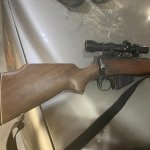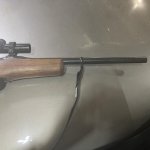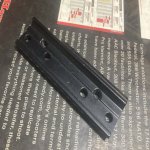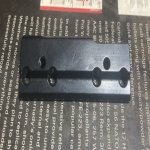I was given a No 4 Longbranch with mint rifling, the problem is that the rear sight that was put on the gun was done wrong and the thing shoots 6in left at 50 yards. To align the rear sight the thing has to be knocked almost out of the dovetail, which looks stupid and honestly is going to risk losing the sight.
Due to this I was wondering, with the rear top of the receiver trimmed and no original No 4 aperture sight mount remaining what would you guys do for a scope mount or an adjustable aperture sight?
Could you put a nice Williams or Lyman peep on it or a scope mount on the side for a minimal charge or will I need to have the open sights redone?
Thanks
Due to this I was wondering, with the rear top of the receiver trimmed and no original No 4 aperture sight mount remaining what would you guys do for a scope mount or an adjustable aperture sight?
Could you put a nice Williams or Lyman peep on it or a scope mount on the side for a minimal charge or will I need to have the open sights redone?
Thanks
















































































